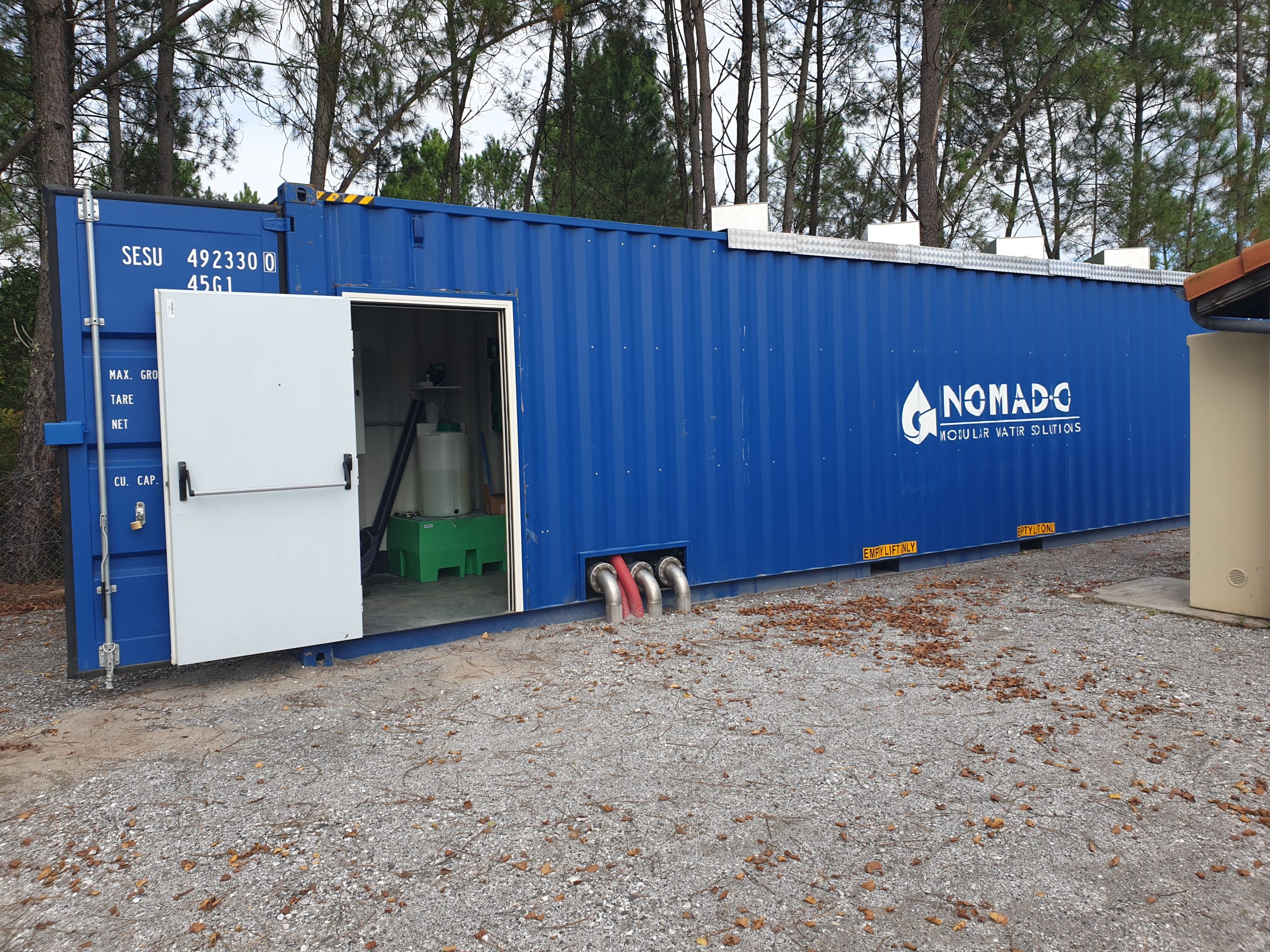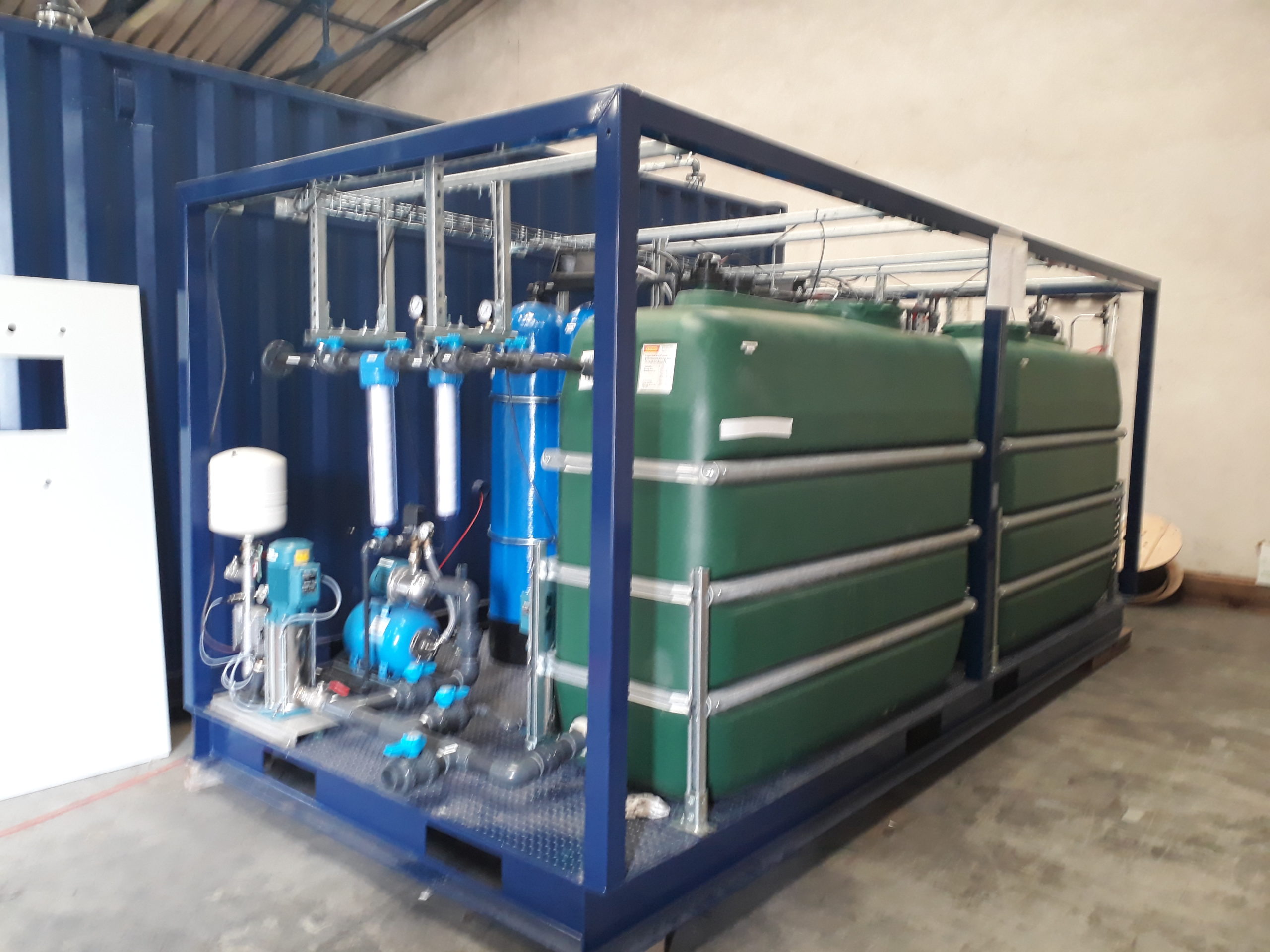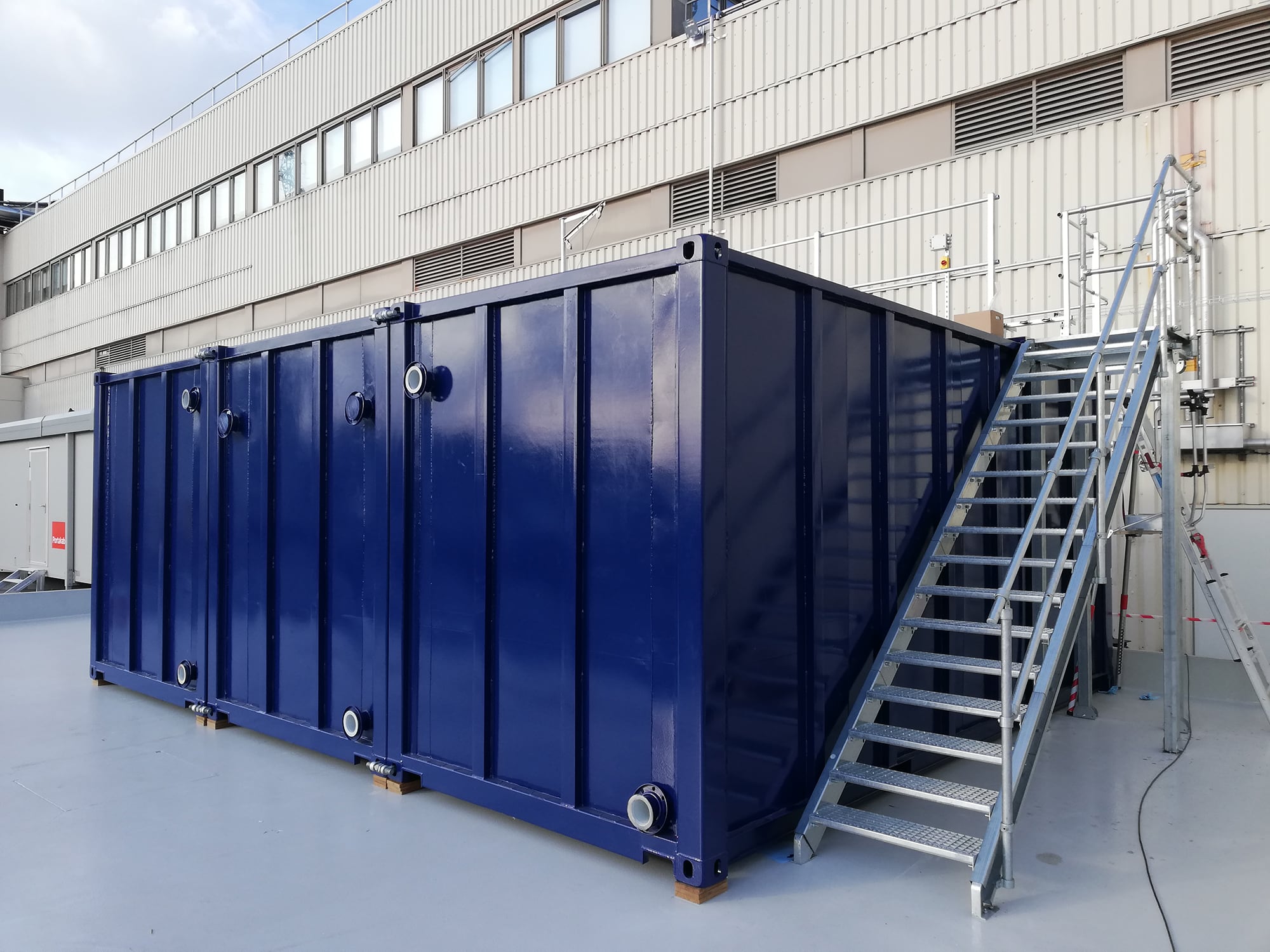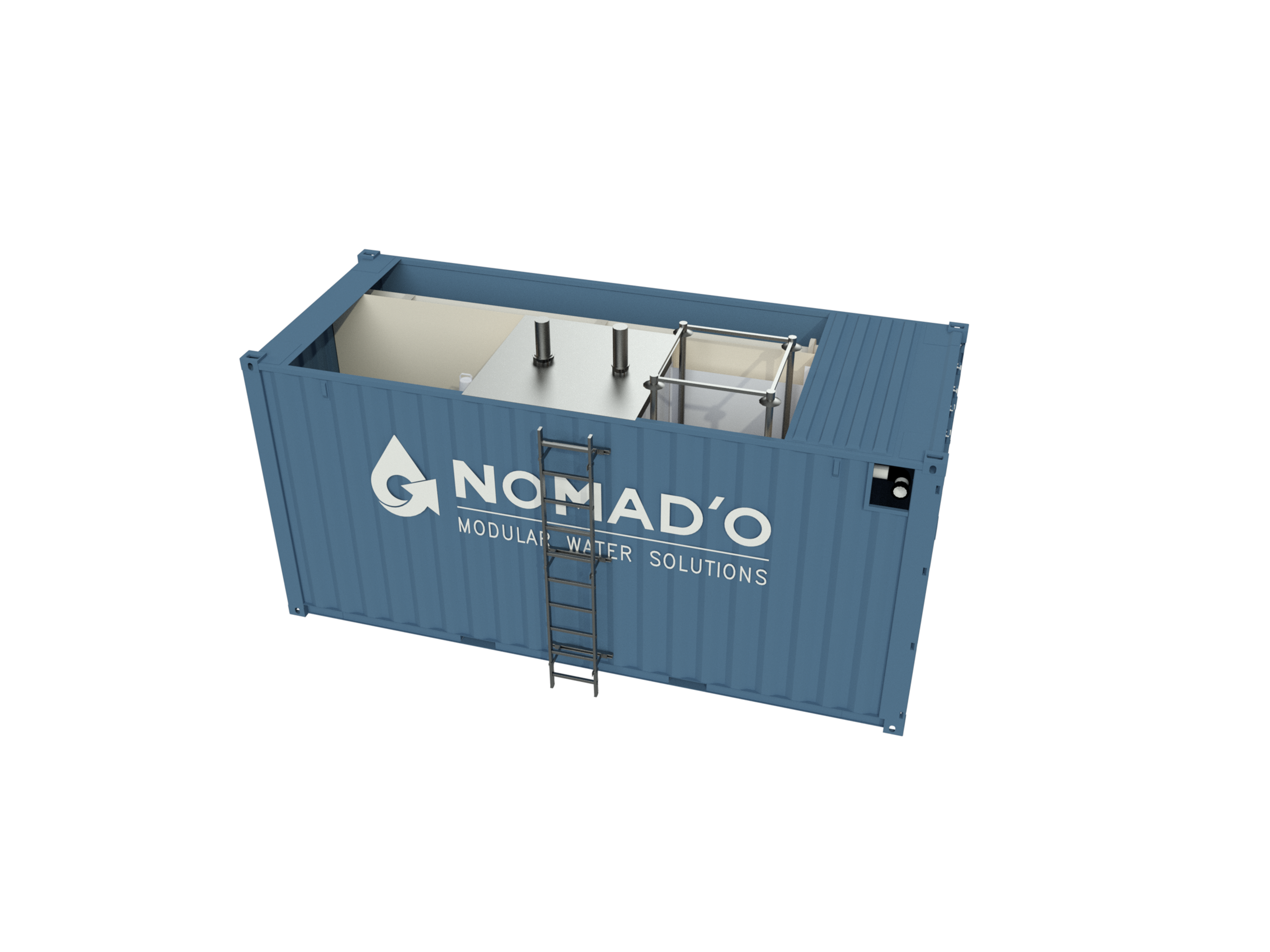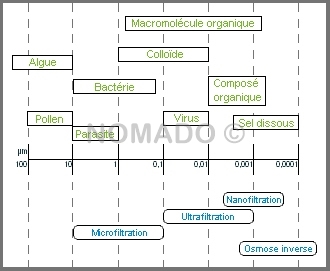Separative technology, microfiltration and membrane treatment
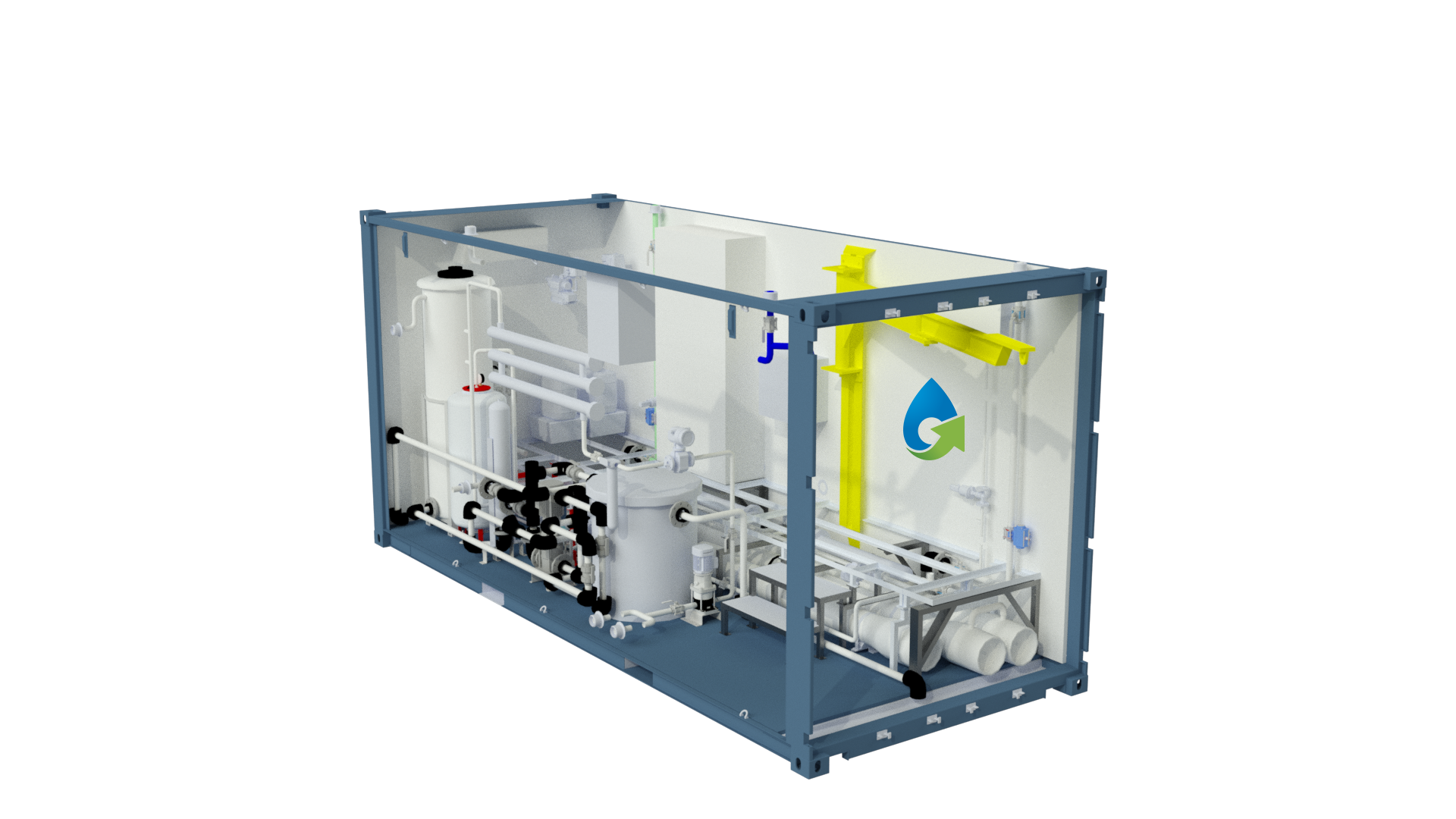
Containerized solutions
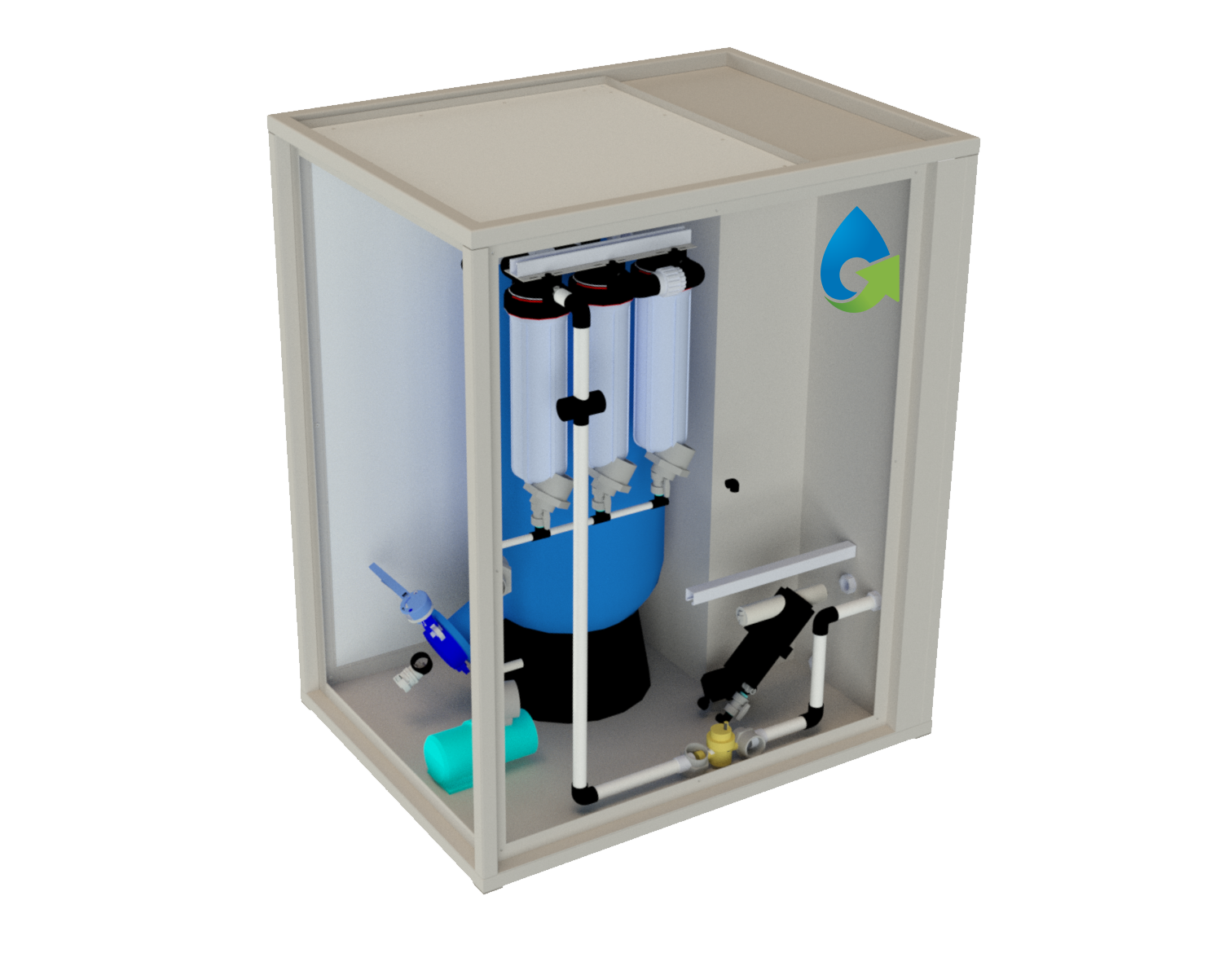
SKID solutions
Read more
Sheet metal work and welding of the hydraulic structures are performed directly inside the container. Waterproofing is ensured by a seal made of special coatings that constitutes a perfectly monolithic block. It prevents water from coming into contact with the structures. The Coatings’ properties are always chosen in accordance with the project’s specifics (Health compliance certificate, WRAS, aggressiveness of reagents or water, etc.).
Applications
Construction of an iron removal unit
Pressure boosting and water treatment unit
Treating pharmaceutical effluent using reverse osmosis
Treating concrete laitance at a major international worksite
The advantages of Nomado’s solutions

Cost benefits
- Cost-effective alternative to civil engineering infrastructures and buried facilities
- Systems that can be reused and relocated
(worksite bungalows, industrial reorganisation, end of concession) - Portable investment
- Possibility to rent, buy back or lease with option to purchase
- In-situ production or treatment
Operational and environmental benefits
- Multimodal transportation (rail, road, sea, air…)
- Simple, fast installation and commissioning
- Maintenance by our technicians possible
- Easy, rapid dismantling upon project completion
- Reduction in carbon footprint
- Worksite hazards reduced

Quality and HSE
- Treatment process adaptable to discharge standards
- Design in accordance with country standards and regulations
- Pre-built and factory tested
- Anticipation of the possibility of deteriorated operating conditions (scenario analysis)
- Targeted oversizing of critical equipment (pumps, motors, etc.)
- Specific job site conditions taken into account (heat, sand, sea, etc.)

Versatile and adaptable
- “Plug & play” design
- Possibility of adding a unit in the event of a variation in load or flow rate
- Can be integrated into an existing facility
Understanding how membrane treatment and microfiltration work

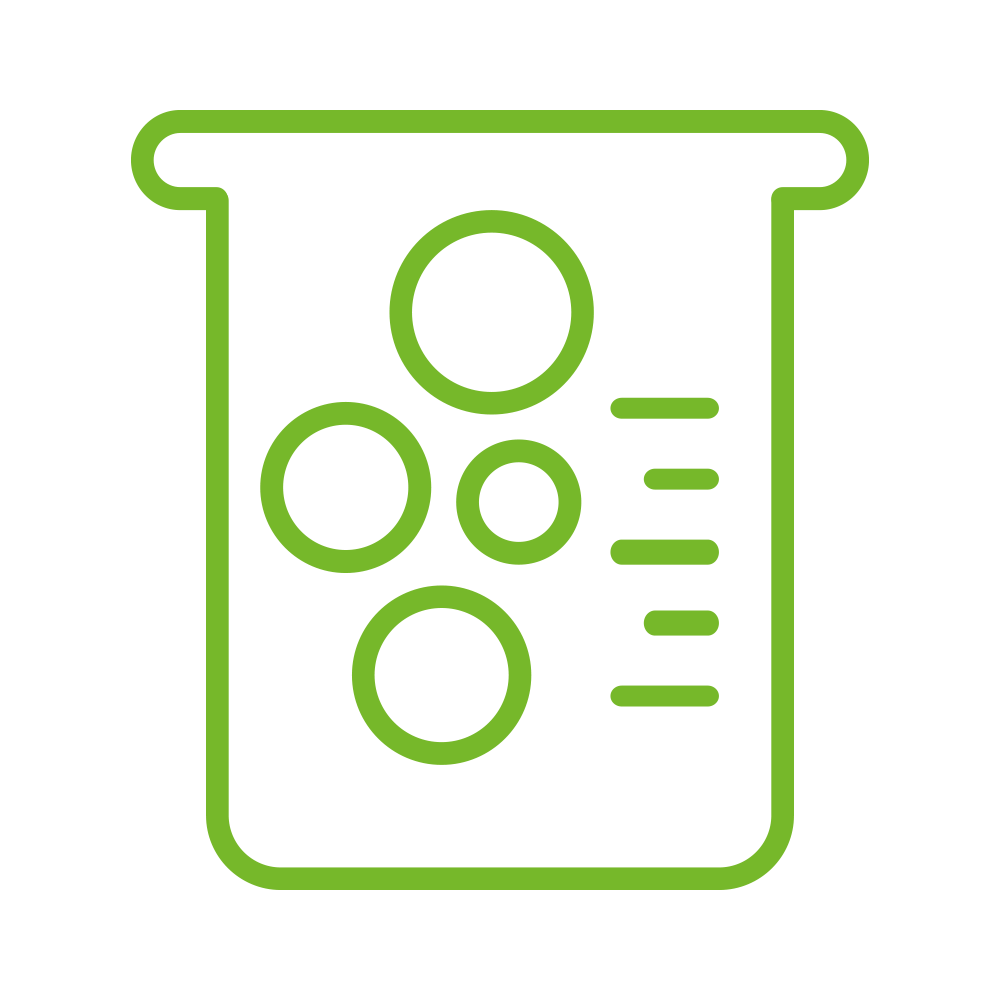
Treatment
Depending on the conditions, we adjust service pressure and/or pore size:
- Microfiltration
Read more
- Ultrafiltration (UF)
Read more
The cut-off value varies between 0.1 and 0.001 micron. At an operating pressure of 1.5 bars the effluent (possibly prefiltered) is pushed through the membrane from the outside to the inside (Out/In) or from the inside to the outside (In/Out). Backwashing is necessary to maintain the membrane’s permeability. Many types of UF membranes exist varying in technology (stuffing method, hollow fiber, flat…) and materials (polysulfone, PVDF (polyvinylidene fluoride), ceramic,…).
- Nanofiltration (NF)
Read more
This technology gets rid of dissolved pollutants in (monovalent and polyvalent ions, such as heavy metals, organic compounds including pesticides, micropollutants), colouring agents, wastewater, surface water, brackish water, as well as groundwater odour. The fluid is forced through a semi-permeable membrane with a cut-off value range of 0.1 to 10nm at a pressure of 5 to 20 bars. Nanofiltration is a good choice compared to reverse osmosis (RO) if you want to limit energy consumption, opt for a more robust technology and limit the need for additional stages of treatment such as remineralization
- Reverse osmosis (RO)
Read more
Osmosis is the natural process by which molecules of a solvent go from the least to the most concentrated solution. Applying a sufficient pressure reverses the natural movement of the fluid. Therefore it is the water with the highest pollution content that goes through the semi-permeable membrane with a pore size no larger than 1nm in diameter. Thus ions including salt, pesticides and other organic compounds, colouring agents, bacteria, viruses and microalgae are trapped.
Tell us about your project

CONTACT US
NOMADO
21, Boulevard du Capitaine Gèze
13014 MARSEILLE – FRANCE
+33 (0)4 84 89 52 42

